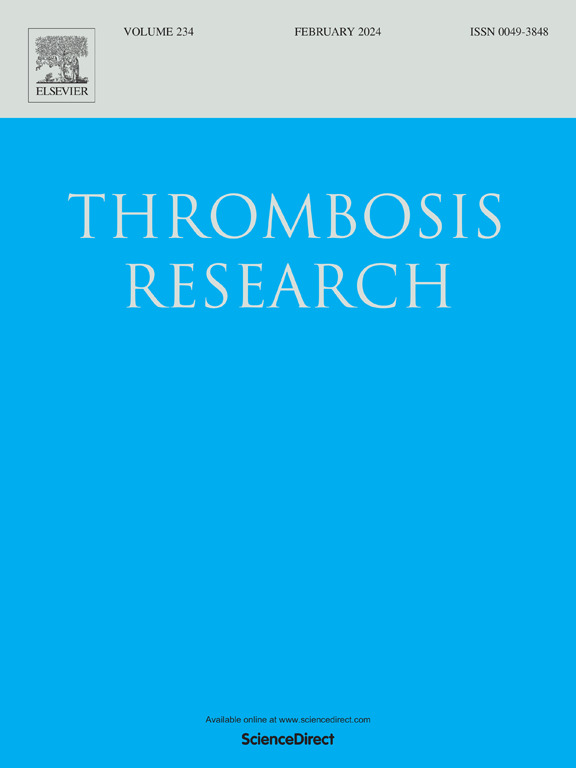Hemostatic alterations in metabolic dysfunction-associated steatotic liver disease (MASLD) and their link to venous thromboembolism (VTE)
IF 3.4
3区 医学
Q1 HEMATOLOGY
引用次数: 0
Abstract
Metabolic dysfunction-associated steatotic liver disease (MASLD) is the most prevalent chronic liver condition worldwide. It is associated with obesity, insulin resistance, type 2 diabetes, hypertension, and dyslipidemia, contributing to increased cardiovascular risk. As MASLD progresses, it may evolve into more advanced liver damage, namely metabolic dysfunction-associated steatohepatitis (MASH), fibrosis, cirrhosis, and, in advanced stages, hepatocellular carcinoma. The liver plays a central role in hemostasis by synthesizing procoagulant, anticoagulant, and fibrinolytic factors. In MASLD patients, alterations in these hemostatic pathways may contribute to a prothrombotic state. Insulin resistance and chronic inflammation further exacerbate these disturbances, increasing the risk of thromboembolism. In conclusion, MASLD may represent not only a hepatic disorder but also an emerging cardiovascular and thromboembolic risk factor. This review aims to provide an updated overview of MASLD and its relationship with venous thromboembolism (VTE), focusing on physiological mechanisms, molecular alterations, and current clinical evidence on both conditions.
代谢功能障碍相关脂肪变性肝病(MASLD)的止血改变及其与静脉血栓栓塞(VTE)的关系
代谢功能障碍相关脂肪变性肝病(MASLD)是世界范围内最常见的慢性肝病。它与肥胖、胰岛素抵抗、2型糖尿病、高血压和血脂异常有关,会增加心血管疾病的风险。随着MASLD的进展,它可能演变为更晚期的肝损害,即代谢功能障碍相关的脂肪性肝炎(MASH)、纤维化、肝硬化,并在晚期发生肝细胞癌。肝脏通过合成促凝剂、抗凝剂和纤溶因子,在止血中起着中心作用。在MASLD患者中,这些止血途径的改变可能导致血栓形成前状态。胰岛素抵抗和慢性炎症进一步加剧了这些紊乱,增加了血栓栓塞的风险。总之,MASLD可能不仅是一种肝脏疾病,也是一种新兴的心血管和血栓栓塞危险因素。本文旨在对MASLD及其与静脉血栓栓塞(VTE)的关系进行最新综述,重点关注这两种疾病的生理机制、分子改变以及目前的临床证据。
本文章由计算机程序翻译,如有差异,请以英文原文为准。
求助全文
约1分钟内获得全文
求助全文
来源期刊

Thrombosis research
医学-外周血管病
CiteScore
14.60
自引率
4.00%
发文量
364
审稿时长
31 days
期刊介绍:
Thrombosis Research is an international journal dedicated to the swift dissemination of new information on thrombosis, hemostasis, and vascular biology, aimed at advancing both science and clinical care. The journal publishes peer-reviewed original research, reviews, editorials, opinions, and critiques, covering both basic and clinical studies. Priority is given to research that promises novel approaches in the diagnosis, therapy, prognosis, and prevention of thrombotic and hemorrhagic diseases.
 求助内容:
求助内容: 应助结果提醒方式:
应助结果提醒方式:


